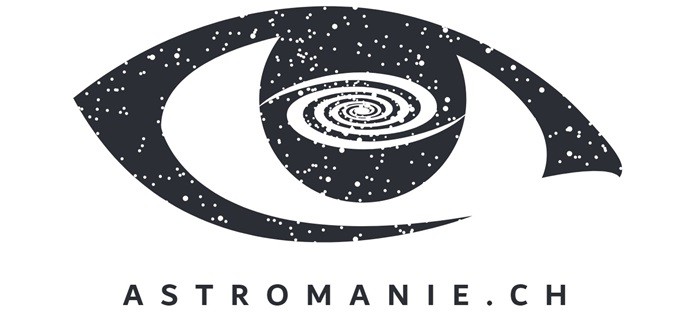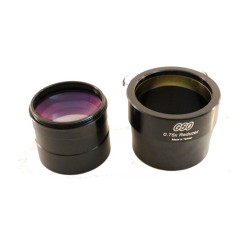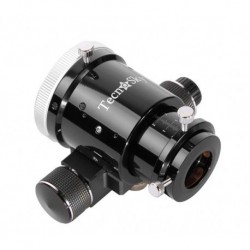No products
Prices are tax included
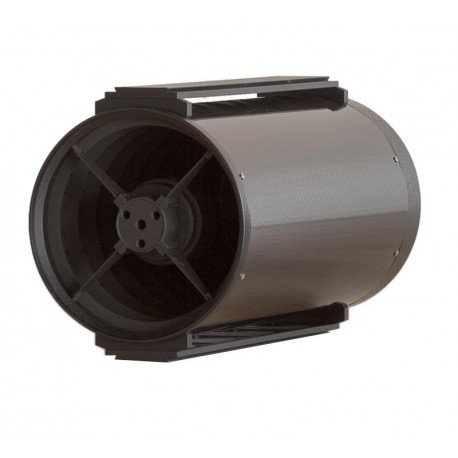 View larger
View larger
TS-Optics 8" Ritchey-Chrétien Pro RC Telescope 203/1624 mm - Carbon tube
GSO RC8 pouces carbone/crayford
New product
TS-Optics 8" Ritchey-Chrétien Pro RC Telescope 203/1624 mm - Carbon tube
Subject to availability from the supplier. Please contact us for more information.
More info
TS-Optics 8" f/8 RC Ritchey-Chrétien Telescope with Carbon Tube
Most large professional telescope are constructed according to the RC principle. Until recently, these telescopes were unaffordable for amateurs. RC telescopes from Teleskop Service are primarily aimed to amateur astronomers with photographic interest. These telescopes are perfectly suited for high-resolution astrophotography. Of course, an RC can also be used for visual observing. Here, the large corrected field of view is noticeable, too. In total, the stars are sharper than, for example, in a Schmidt-Cassegrain.
The advantages of the TS-Optics RC Telescopes at a glance:
♦ Hyperbolic primary and secondary mirror for a large fully illuminated field of view.
♦ Astrophotography with camera sensors up to 30 mm diameter possible without corrector. For larger sensors, like full-frame size, Teleskop-Service offers ready-to-use corrector solutions.
♦ 99% dielectric high-reflectivy coating on main and secondary mirror for an even brighter image.
♦ Significantly shorter cooling down time through open construction and active primary mirror ventilation.
♦ Internal baffles in the tube for even more contrast.
♦ High back focus for correctors, reducers and also binoviewers.
♦ High-quality 2" MONORAIL focuser with 2" and 1.25" receptacle.
Astrophotography with the RC telescope:
Due to the large corrected field of view, you can, for example, use a DSLR up to APS-C format without corrector. Thus the RC is a pure mirror system for astrophotography. The images become ultrasharp. For imaging dirctly in the focus, you will need the M90x1 extension tubes which are supplied. They are threaded between telescope and focuser, thus reducing back-focus.
The generous back-focus also allows attaching correctors which we recommend when using sensors of at least full-frame size. You can also attach a focal reducer, thus further increasing the speed of the RC.
You can connect the camera directly via 2" receptacle.
The advantages of a carbon tube over a metal tube:
The weight reduction is minimal - only about 300 grams - the main advantage ist the focus stability when temperature changes. That is important for astrophotography. When temperatures drop, metal contracts and the focus moves. Refocusing is necessary. A carbon tube does not change, the combination of quartz glass mirror and carbon composite tube makes a readjustment of the sharpness obsolete, even for long time exposures.
The 2" MONORAIL focuser - more than a Crayford:
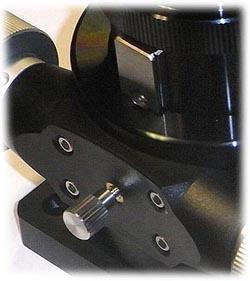 The Monorail focuser combines the ease of movement of a Crayford focuser with the stiffness of a rack-and-pinion focuser. Thus astrophotography becomes a success.
The Monorail focuser combines the ease of movement of a Crayford focuser with the stiffness of a rack-and-pinion focuser. Thus astrophotography becomes a success.
♦ Massive stainless steel rail instead of small ball bearings for more stiffness.
♦ No tilting anymore when locking the drawtube.
♦ 360° rotation for optimal object alignment
♦ Female M69x1 thread for threaded adaptions
♦ 2" and 1.25" compression rings for push adaptions
♦ 1:10 dual speed for accurate focusing
♦ Motor focus can easily retrofitted
♦ Lined scale for quick retrieving of the focus.
♦ Easy operation
Primary and secondary mirror of quartz glass with 99% reflectivity and protective dielectrical quarz layer:
Quartz glass does not change its dimensions if temperature changes. When the temperature changes slowly during an exposure, other mirror substrates, like Pyrex, tend to a deformation of the mirror and thus to a shift of the focus. This problem does not exist for mirrors of quartz glass. Thus the focus is better maintained which is very important for long exposures. Both mirrors are coated with 99% reflectivity. The image is obviously brighter than the one of telescopes with only 90% or 94% reflection layer.
The advantages of TS RC telescopes for astrophotography:
The TS RC astrographa are true Ritchey-Chrétien telescopes. Maksutovs and Schmidt-Cassegrains have spherical mirrors and need correctors for making a large field usable. With Schmidt-Cassegrains, you can see the aberrations in the field even when working visually. Most times, Maksutov-Cassegrains are so slow that they are not suitable for astrophotography. RC telescopes have hyperbolical primary and secondary mirrors. They are more difficult to manufacture, but offer a significantly sharper field with less aberrations throughout the field.
Why is the RC Telescope superior to Schmidt-Cassegrain telescopes with correctors:
Celestron EHD or Meade ACF telescopes need a corrector. Additionally, these telescopes have a Schmidt plate at the front side which is prone to dew. The RC is a pure reflection system without lenses in the light path. Thus you can use the complete light even in the infrared range. The image is brighter and the exposure times get shorter. The field of an RC telescope is coma-free by design and relatively flat.
No shifting problem with TS RC telescopes:
Telescopes with focusing via movable primary mirror often suffer from the "shifting problem". The image shifts while focusing or even jumps. By now, Meade and Celestron have the problem under control, but the effect is noticable nonetheless. TS RC telescopes do not have this problem, as their primary mirror is fixed. Focusing is done via a high-quality focuser. An additional advantage is the optimal distance from primary to secondary mirror. This gives you the guarantee of the best possible image. If the primary mirror moves relatively to the secondary, you will practically never have the optimal distance.
technical data:
| Optical Design: | True RC with a hyperbolic primary and secondary mirror |
| Aperture: | 203 mm / 8" |
| Focal length: | 1624 mm |
| Focal ratio: | f/8 |
| Resolution: | 0.58" |
| Reflectivity: | 99% reflectivity non-tarnishing dielectric mirror coatings |
| Back focus: | 254 mm from the tubeŽs backside or 159 mm from the 2" receptacle of the focuser |
| Tube Diameter: | 230 mm |
| Tube Length: | 580 mm with focuser |
| Weight: | 7.6 kg with focuser and dovetails |
| Tube Material: | Carbon composite with internal baffles |
| Total Obstruction by Secondary: | 85 mm |
| Focuser: | 2" Crayford focuser (Monorail) |
| Connection Thread: | M90x1 |
| 2x Dovetail Bars: | 1x Losmandy / 1x GP style |
